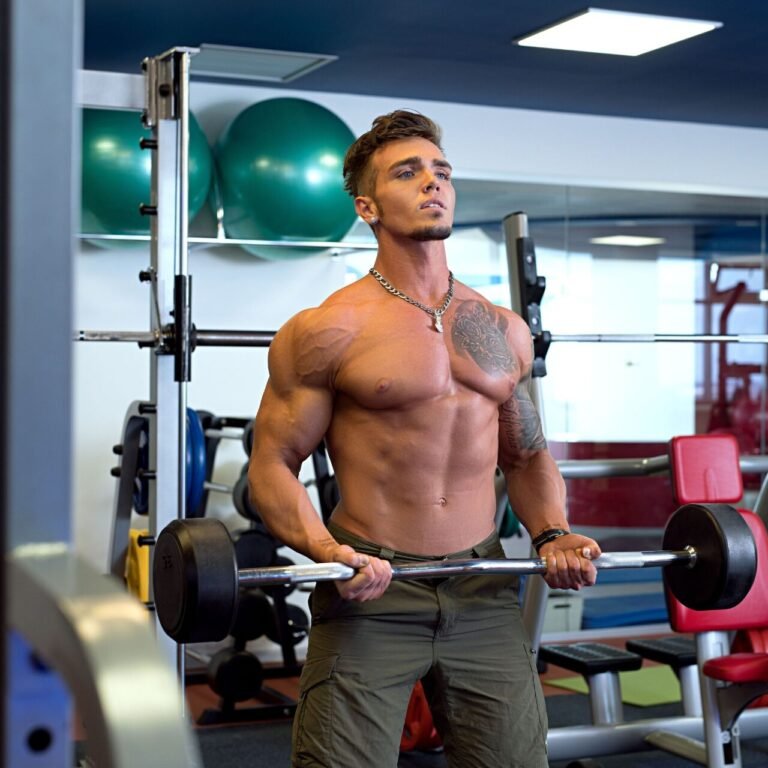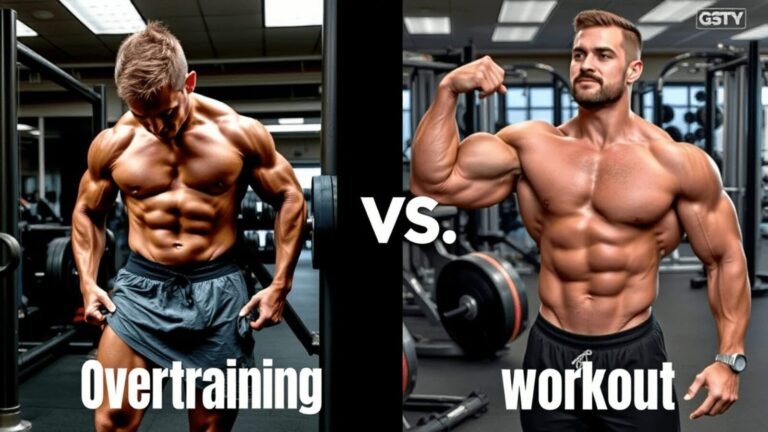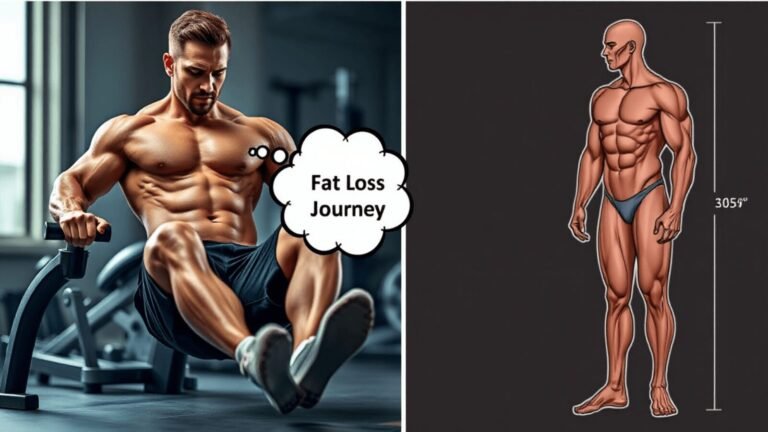6 Myths Beginner Bodybuilders Must Avoid to Succeed in Their Bodybuilding Goals

Any time one walks into a busy gym, there are the immediate sounds of weights clanging and people talking about their exercises on treadmills. That in itself can be very confusing for a beginner. The situation is not made any easier with Myths Beginner Bodybuilders Must Avoid and conceptions about building muscle and fitness in the air. They have a tendency to mislead one from reaching his or her goals, and this increases stress. These are major obstacles in trying to achieve that perfect body.
But what if it didn’t need to be so complicated? What if you could strip away all the misinformation and then clearly see a direction based upon the facts? And in that direction, each and every workout would be more productive. From weight training to cardio, knowing the truth about fitness can change the way you exercise and think about your fitness journey. Let’s now reveal the truth behind Myths Beginner Bodybuilders Must Avoid, which may well stand in the way of your improved strength and confidence.
Myth 1: The Only Way to Gain Muscle is by Lifting Heavy

Now, imagine walking into a busy gym full of concentrated energy and effort; between clanging weights and machines, there’s one myth that hinders new bodybuilders: the one that you need to lift heavy in order to build muscle. Yes, heavy weights can be intimidating, but more than the heavyweight is involved in how big your muscles grow.
Take Arnold Schwarzenegger, for example. Yes, he did lift heavy weights, but also lighter ones with higher repetitions to shape his muscles. Increasing the repetitions with lighter weights keeps your muscles working longer, much like constant rain makes a garden grow. In this manner, each portion of the muscles is worked without it getting injured or strained.
But weightlifting isn’t the only thing that helps your muscles grow. Good form and consistency are equally important. Think of it like building a skyscraper: careful, steady work makes it strong. Paying attention to how you’re moving prevents injuries that might keep you from working out. Also, nutrition and rest are important. Eating enough protein helps your muscles recover, and getting good sleep gives your body the time it needs to rebuild-like workers fixing up a building at night.
So, let me remind you that weight training isn’t all about how heavy the weights are, but how well one takes care of his body and balances it out with good food and rest.
Myth 2: You Need Supplements to See Results

The sizzling sound of chicken and the bright colors of fresh vegetables are more than a feast to your senses; they speak to the might of whole foods in building muscle. Whole foods-lean meats, eggs, nuts, and vegetables-offer balanced nutrients-amino acids, vitamins, and minerals-that supplements can’t duplicate.
Relying entirely on supplements can cause problems. Just imagine going through a number of pills or protein shakes but afterwards complaining about headaches or stomach problems. Those are the signs of nutrient imbalances because supplements can’t replace the complexity of real food benefits. Overusing them may even put some stress on organs like your kidneys or liver. Eating nutritious meals helps not just your muscles, but also your overall health.
Instead of always buying tubs of protein powder, invest in healthy foods for the kitchen, like salmon or avocados. These foods keep not just your muscles going but your whole body and are very easy to include in your day-to-day diet. First, have a good and balanced diet with fruits, vegetables, grains, and proteins. Use supplements when you really need them so they enhance your nutrition, not replace it.
Stepping out of the habit of overusing supplements helps an individual build a better eating habit with natural foods rather than with lab-made products. This gives a nod towards long-term health and forms a solid base toward reaching your bodybuilding goals.
Myth 3: Cardio Kills Muscle Gains

So, a very well-recognized myth among people getting started in the gym is that cardio ruins your muscle gain. That’s strictly not the case. Incorporating light cardio into your program can be truly complementary, not detrimental, to your strength training. Running or biking improves your heart and lungs and builds endurance so you can work harder longer. The cardiovascular exercise involved in activities such as rowing or cycling has positive implications for muscle building.
Think of it, if you will, as a palette of paints. Cardio and strength together create a harmonious balance of muscle and tone. By incorporating both into your routine, such as weight training with HIIT, you can burn fat but retain muscles. Just think about toggling between weightlifting and running sprints at short intervals. That change in training pushes the body in new ways, furthering an athletic build that is well-rounded.
To make sure cardio works for you, not against you, you will have to plan it amply. Do your cardio on days when you don’t do weight lifting or right after your strength training; that way, muscles can grow and recover. One finding that balance may improve metabolism and reach your desired fitness goals without losing any muscle gains.
Myth 4: More Time in the Gym Means Better Results

Just imagine spending all your time in the gym, just hour after hour of weight-lifting, doing translation to a perfect body. That sounds dedicated, but it is incredibly damaging to progress. Overtraining places way too much stress on the human body, which then makes the muscles tired, joints sore, and things like tendonitis appear just to keep you away from the gym and slow down progress.
Instead of spending hours in the gym, pay attention to the quality of the exercises performed. Your body can be likened to a machine that works much better with more focused training rather than simply more repetitions. Workouts properly designed build muscle and keep your energy high. Such a workout can be carried out on compound exercises like squats or deadlifts with a weight where one can maintain form. The lift should be neat and tailored, not slack or in a hurry.
Another factor that influences the growth of muscles is time for recovery. It is like kneading dough during and after a workout; your muscles need some time to recover to start growing. If you don’t rest, your muscles won’t develop well. Take your rest days between intense workouts and give your muscles time to recover. Your body needs quality sleep for repair and to maintain hormonal balance, which is very important for the increase in muscles. You can try stretching or light yoga on rest days so that your blood keeps flowing without overworking your muscles.
After all, a smart workout plan with focused, intensive sessions, and ample recovery time is always better than mindless hours spent lifting weights. Your future self will thank you for having trained wisely and not overtrained.
Myth 5: Women Shouldn't Lift Weights Because They Will Bulk Up

The myth that should be dispelled is that women shouldn’t lift weights because they will become bulky. Much of it has to do with hormonal factors that greatly affect the process of muscle building. Women, by nature, possess a very small amount of testosterone in their body compared to men. This makes it hard for them to have big muscles like men have. Much like trying to blow up a balloon with very little air, the thought is simply not that easy as the myth would lead one to believe.
Lifting weights is not merely adding mass to one’s frame. It truly works on the body and firms it up, providing you with a more defined look. Everyone who steps into the gym is like having a chunk of marble and chiseling out a piece of sculpture. Muscles look good on the body, but strong muscles help in simple tasks like moving groceries or maintaining proper sitting posture at work. Bone strength is increased with weight training as well, which reduces the risk of diseases such as osteoporosis later in life.
Each time you go to the gym, you are investing in your future health. The advantages of weight training are immense, from a higher metabolism and improved heart health to improved moods due to endorphins. You may be more open to informed and empowering choices for better fitness by moving beyond that outdated vision of weightlifting making females cumbersome.
Myth 6: You Can Target Fat Loss from Specific Areas

The underlying sentiment here is that many novices would feel this way-that they can lose fat from specific sites around the body. The concept is known as spot reduction. For example, doing a great deal of sit-ups makes the fat in your belly melt away, and doing tricep exercises will make the flab disappear from your arms. That is just not how it works-your body does not work by trying to get the water out of a pool by scooping it from one corner. Fat loss is general; it happens throughout the body, primarily through a process of calorie intake reduction and exercising.
The best ways to reduce body fat are strength training and cardio. Weight training builds muscles, which jacks up your metabolism and makes your body burn more fat even at rest. On the other hand, cardio burns calories during your exercise. Mixing HIIT with exercises like squats or deadlifts keeps the fire burning hot-it’s a powerful way to burn fat effectively.
It is just like the growth of a plant; it takes time and requires a lot of patience. Just stick with it and don’t get suckered into the quick fixes promising fast results in this or that area. The real change will be coming from within once one eats well and stays active. Keep in mind that long-term results are brought about by consistent progress, not sudden, unsupportable efforts.
Forget about spot reduction and think of fostering healthy habits for the whole body. Workouts aimed at overall fitness will help you succeed long into the future. Be patient; with each workout, you are a step closer to a healthier, stronger you. In this way, you can avoid frustration while maintaining your ideals of fitness for your body.
Conclusion: Forge Your Path with Truth and Confidence

With the help of the presented list of Myths Beginner Bodybuilders Must Avoid, you are sure about applying effective measures as a neophyte. The idea of developing an efficient routine is likened to the making of a well-balanced masterpiece; it involves healthy and wholesome foods, not just settling for protein shakes after workouts. Rest is equally important for recuperation and keeping you keyed up. Smart exercise choices form a very sound basis for your overall growth.
While renouncing these seven myths, just imagine the building of a muscular body, starting to develop healthier and more disciplined habits in life. A balanced routine, along with variety and realistic goals, can only lead to actual progress. Your work will pay off if you respect the evidence-based principles of practice. Your potential wants to be unleashed, and your fitness goals are well in reach.
